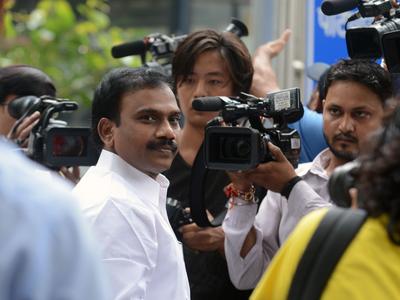Very simply put, Dr Bhagwati is all for higher growth, based on the assumption that an increase in income will create opportunities pulling up the social sector; Dr Sen is of the opinion that growth in itself is not enough, and the prime focus needs to be on improving the ‘human’ indicators of development such as education, health, nutrition and so on. The two scholars are both in favour of growth and equity — the difference lies only in the preceding policy imperative. For a developing country like India, with its inherent political and social fragmentation, a ‘middle path’ approach is what is likely to work best. The Finance Minister P Chidambaram has very rationally endorsed both views and emphasised the need to combine passion for growth with compassion for the poor.
Out of all the hullaballoo what is truly a refreshing change is the new ‘cerebral avatar’ being donned by the electoral propaganda. The political parties are seemingly moving away from playing up the parochial and ascriptive difference cards of caste, creed, religion and community and instead engaging in rebuttals over the best-fitting model of growth. This is perhaps a new bait to attract educated but reluctant voters into active participation during the forthcoming elections. The tagging in of political rivals and likely prime-ministerial candidates marks a clear shift away from pursuing the intellectual aspect of the debate towards the party politics aspect. However, once the dust raised by the storm of this intellectual debate in politics settles, India will still be facing the challenge of pushing a decelerating economy back to a sustainable growth rate and groping with measures to tame the growing inequality that has serious implications for stability — social, economic and political.
What is pertinent to remember is that India’s problem is not so much with the growth model but failure to establish effective and corruption-free governance. The recent tragic death of 23 Indian children in Bihar due to poisoning from the government-sponsored school lunch (under the successful policy of the Mid-Day Meal Scheme) is an eye opener to the harm caused by corruption and the poor implementation of policy in India.
While the politicos look for excuses, the veritable reality is that there are serious lacunae in India’s governance systems which need immediate redress. A deeper analysis of India’s public policies would reveal that while the state-led programs are well intentioned, they often fail to reach the actual beneficiaries and, even when they do, fail to stand up to the social reality. The sheer scale of the public programs in a country like India’s entails huge social expenditure. Top it up with inefficiency and corruption, and you have a sure recipe for disaster.
The Mahatma Gandhi National Rural Employment Guarantee Act, the Central Government Health Scheme, the Public Distribution System or the Mid-Day Meal Scheme are all glaring examples of the prohibitive resource costs and consequent strain on India’s macro economy compounded by the ill effects of corruption. There is no denying that corruption delays, distorts and diverts the goals of development. Anti-corruption measures undertaken by the government so far have focused primarily on redressing administrative machinery while conveniently glossing over the patronage networks between vested political and private interests, bolstered by social divisions. Thus all attempts at reforms remain half-baked and the fruits of development do not reach the intended recipients.
Whether one is looking at the magical two-digit growth figure or a better quality of life as the prime mover of development (or better still, a third model that takes the best out of both), success depends on a clean and accountable system of governance. This would require seamless integration of the tasks of strengthening political accountability, encouraging economic competition, reinforcing state policies of redistribution, reassuring transparency and equity in implementation, and fruitfully engaging civil society and media. The current economic slowdown is cyclical, but India is most likely to bounce back only if such effective reforms are instituted and implemented. Rather than competing models of growth, India urgently needs a role model that succeeds in brushing aside political predilections and compulsions to make a positive difference in the lives of people.
Sukalpa Chakrabarti is Assistant Professor of International Relations and Public Policy at the Symbiosis School of Economics in Pune, India.


If we seriously desire a corruption-free society, and a decent political atmosphere, there has to be genuine commitment at our own end. As you know most of the communities (such as Bengali or Tamil) in this sub-continent are covered by the ‘Culture of Poverty’ (and hopelessness), irrespective of class or economic strata. Nobody is ashamed of the deep-rooted corruption in this society at heart, or a decaying general quality of life, bad politico-governance, poor work place, weak mother language, and continuous consumption of common social space. We love to become parents only by self-procreation (mindlessly driven by the very animal instinct) depriving children their fundamental rights of a caring society, and a dignified life free of fear.